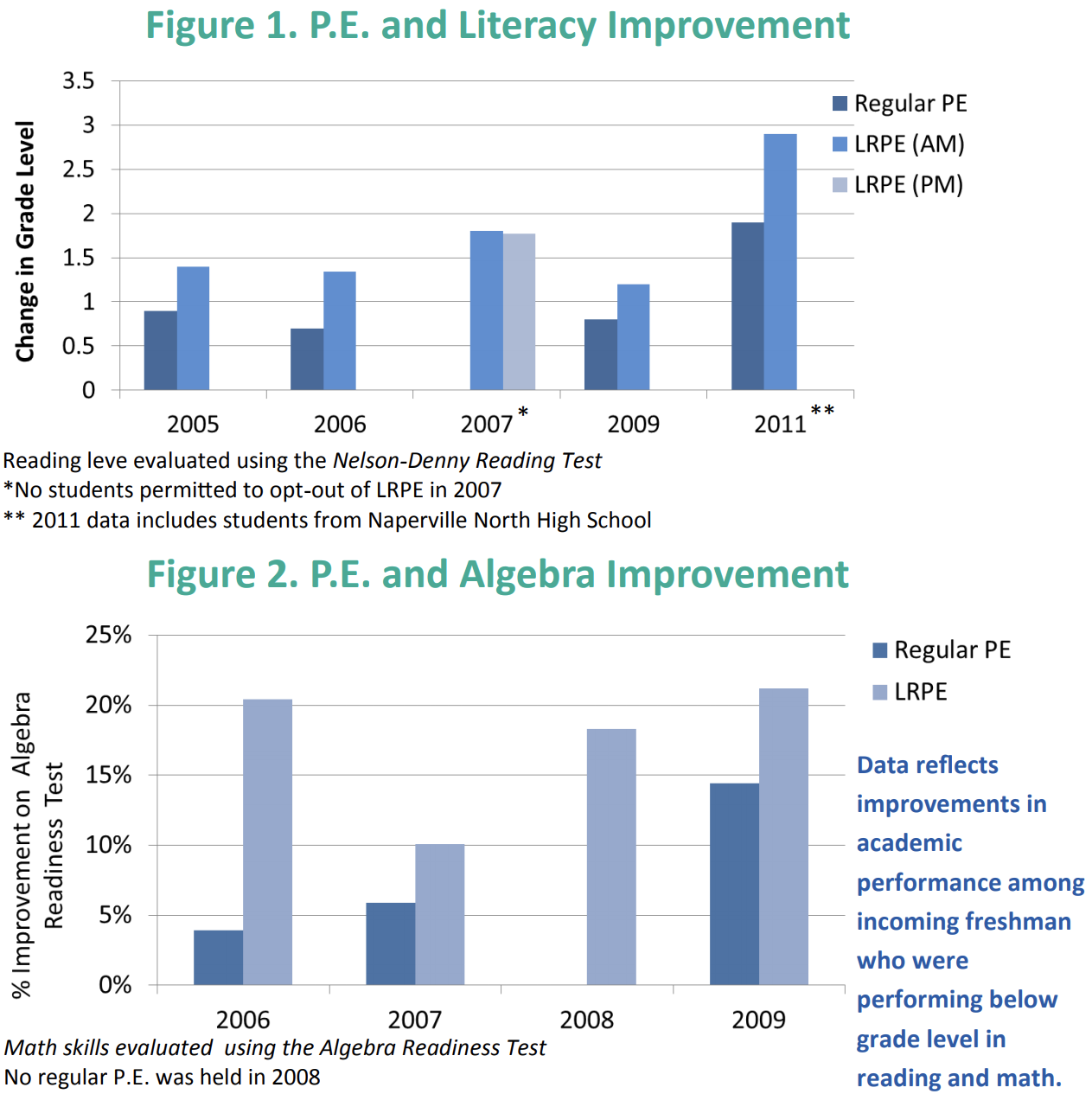“You have the power to change your brain. All you have to do is lace up your running shoes.”
— John J. Ratey
What if your student could increase their learning, boost their mood, and increase their focus by doing something as simple as going for a run or jumping on a trampoline for 15 minutes?
Everyone knows exercise is good for our bodies. But many people aren’t aware that it’s even MORE important for our BRAINS.
In his book Spark: The Revolutionary New Science of Exercise and the Brain, John J. Ratey, MD argues that exercise has such a significant impact on the brain, and we should consider its benefits for our brains first, and bodies second. He describes physical activity as “Miracle Gro(R) for your brain”, providing the stimulation required for our brains to build new neural connections.
Exercise has tremendously positive benefits! Even a moderate amount of cardio activity can help to…
- Increase learning and memory
- Improve executive functioning skills
- Reduce ADHD symptoms
- Lower stress levels
- Reduce anxiety and depression
- Improve immune function
Exercise supercharges the learning process

This is a scan showing activity levels in the brains of two students before taking an academic achievement test that measured performance in reading, spelling, and math. The students on the left were in a group that sat quietly for 20 minutes before the test, while the students on the right were in a group that went on a 20-minute walk prior to the test.
Red indicates high activity, while blue indicates lower activity. As you can see, the brain on the right is much more active — which had a direct impact on the students’ performance.
The students who walked for 20 minutes completed the test faster and with greater accuracy than those who sat, and were more likely to read above their grade level.
And this was after just 20 minutes of walking! Intense exercise activates the brain even more.
This higher brain activity leads to increased levels of BDNF, or “brain-derived neurotrophic factor”, a protein that builds and maintains neurons and their networks and facilitates the learning process, helping our brains learn new information more quickly and remember it longer.
This is illustrated in a now-famous study Ratey references in his book about Naperville Central High School in Chicago, Illinois. The gym teachers at Naperville conducted an experiment called “Learning Readiness P.E.” (LRPE),, where they scheduled time for students to participate in P.E. before the school day started and used heart rate monitors to ensure that students were engaging in moderate- to high-intensity cardiovascular exercise. Students who participated in Learning Readiness P.E. experienced significantly greater gains in their math and reading performance as compared with students who participated in more traditional P.E. classes.

Exercise helps with mood regulation
Exercise also helps with stress management and mood regulation. Physical activity increases the same hormones (dopamine and serotonin) in our brain that antidepressant medications are designed to increase, and can have a tremendously positive impact on people’s state of mind.
This is especially important for teenagers because studies have shown that one in three adolescents (31.9%) will meet the criteria for an anxiety disorder by age 18. More recent estimates show that the number of students experiencing these challenges has increased as a result of the COVID pandemic.
The good news is that exercise can have a very powerful impact on mood regulation. In a 1999 study, James Blumenthal showed that exercise was as effective for depression as medication, and found that every 50 minutes of exercise correlated to a 50% reduction in a person’s likelihood of being depressed. In Britain, doctors actually prescribe exercise as a treatment for depression.
Exercise reduces ADHD symptoms
Physical activity helps boost executive functioning skills, and can dramatically reduce ADHD symptoms. (Even if your student doesn’t have ADHD, we can all benefit from increased executive functioning skills!)
For those with ADHD, exercise is incredibly valuable. Exercise boosts dopamine and norepinephrine, which help us regulate emotions and feel motivated to take action. The ADHD brain is deficient in both dopamine and norepinephrine, which is why increasing these is crucial for students with ADHD to get things done. In some cases, exercise has been found just as effective in treating ADHD symptoms as medication.
For even greater ADHD benefits, students can try cardio exercise COMBINED with complex movement – like martial arts, tennis, ballet, gymnastics, rock climbing, mountain biking, etc. — anything that requires complex movements in the midst of heavy exertion. This combination of challenging the brain and the body simultaneously has an even greater positive impact than aerobic exercise alone.
How to get started
How much exercise does your student need to unlock these benefits?
According to Ratey, engaging in aerobic activities 4-5 days a week for 30 minutes to an hour will have optimal benefits for students’ performance in school and their mental health.
But If 30 minutes a day sounds too challenging, try starting with just 10 or 15 minutes a day. Studies suggest that even just 10 minutes of exercise a day can boost cognitive performance!
Starting small is perfectly fine. As habits expert James Clear says, “the best way to make exercise a habit is to start with an exercise that is so easy that you can do it even when you are running low on willpower.”
Since students often have more free time over the summer, it’s a great time for them to establish a rhythm of consistent exercise before heading back to school in the fall.
If your teen isn’t an athlete, the summer can also be a great time to experiment with different activities to find a type of exercise they actually like doing.
Once they find something they enjoy, they can turn it into a habit by…
- Scheduling it into their daily routine (just like they would with a sports practice)
- Creating social support by finding ways to get relatives or friends involved
- Find ways to track & measure their success, for example by using a tracker like Fitbit to count the # of days they’ve been active during the week
In addition to their regular exercise routine, students can also take “brain breaks” throughout the day to do something active for 5-10 minutes like jumping rope, walking the dog, running up and down the stairs, or jumping on a trampoline. This is a great way to get “unstuck”, shift their mood, and reset their attention or focus.
Takeaways
Exercise can have an enormous impact on students’ ability to learn, mood regulation, anxiety and depression, and focus and attention. It can be as powerful as medication, and without any of the side effects. All they have to do is get active.
If you can take the first steps this year to help your student understand the important relationship between MOVEMENT and their brain’s ability to function at its best, this will help empower them to successfully navigate challenges throughout the rest of their life!

Join 11,000+ parents helping their students earn better grades with less stress!

About The Author
Dr. Maggie Wray is a certified ADHD Coach & Academic Life Coach with a Ph.D. in Neurobiology and Behavior from Cornell and a Bachelor’s degree in Astrophysics from Princeton. She founded Creating Positive Futures in 2012 to help high school and college students learn how to earn better grades with less stress. Her team of dedicated coaches is on a mission to empower students to develop the mindset, organization, time management, and study skills they need to achieve their goals.
Related Posts
Other Posts You May Enjoy
How Does Your Teen Handle Failure?
How do you feel about failure?Most of us aren’t crazy about it. But at some point, no matter how hard we try, we’re going to fail at something. So, it’s important to consider how to respond to failure when it does happen, and how to improve our resilience so we’re...
Optimistic students earn better grades
Is your student more of an optimist, or a pessimist? Studies have shown that optimists experience a number of benefits later in life, as compared with their more pessimistic peers, including… Better test scores and higher GPAs Lower levels of stress, anxiety, and...
Starting before you’re motivated
Most students want to do well in school. But wanting to do well doesn't guarantee they will feel motivated to work on assignments in the moment. Even students who usually get good grades have days when they just don’t feel like doing homework or studying for their...




